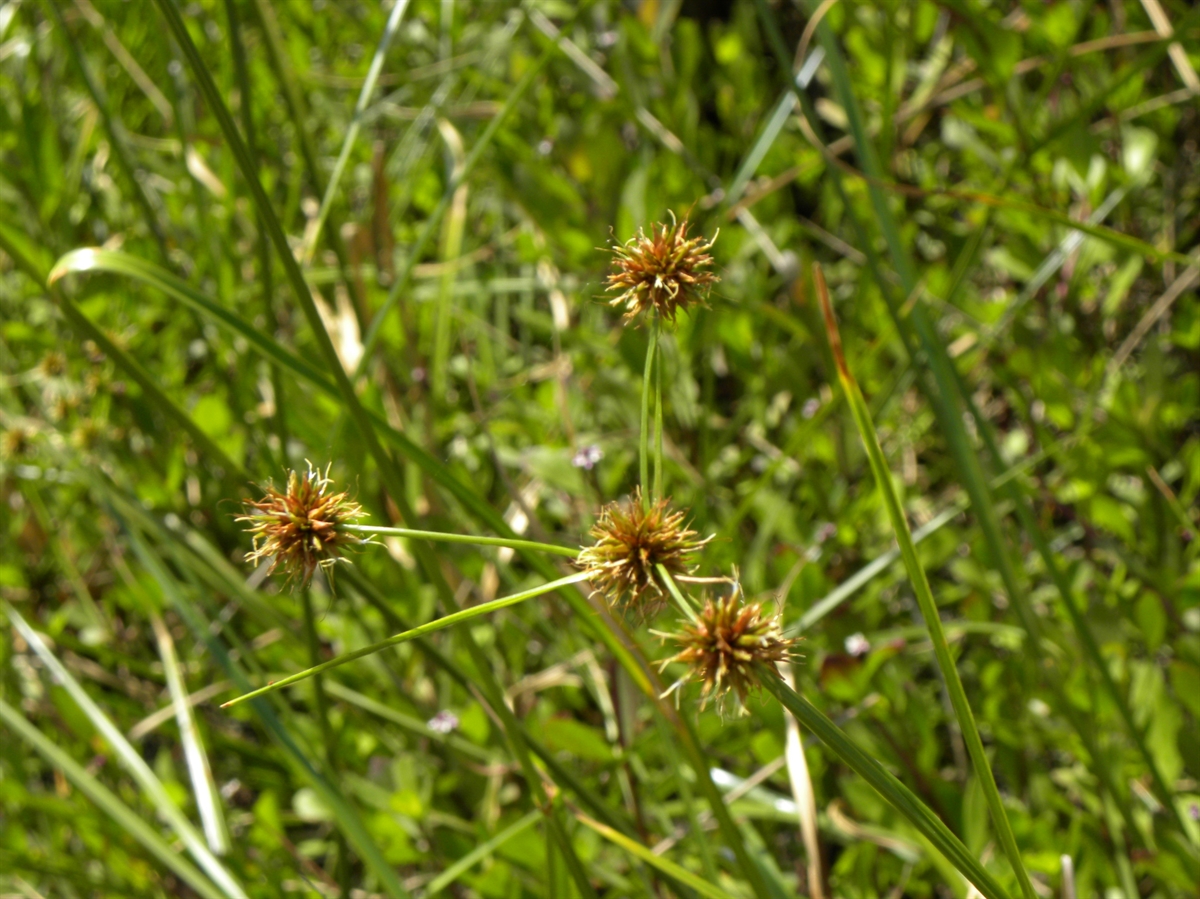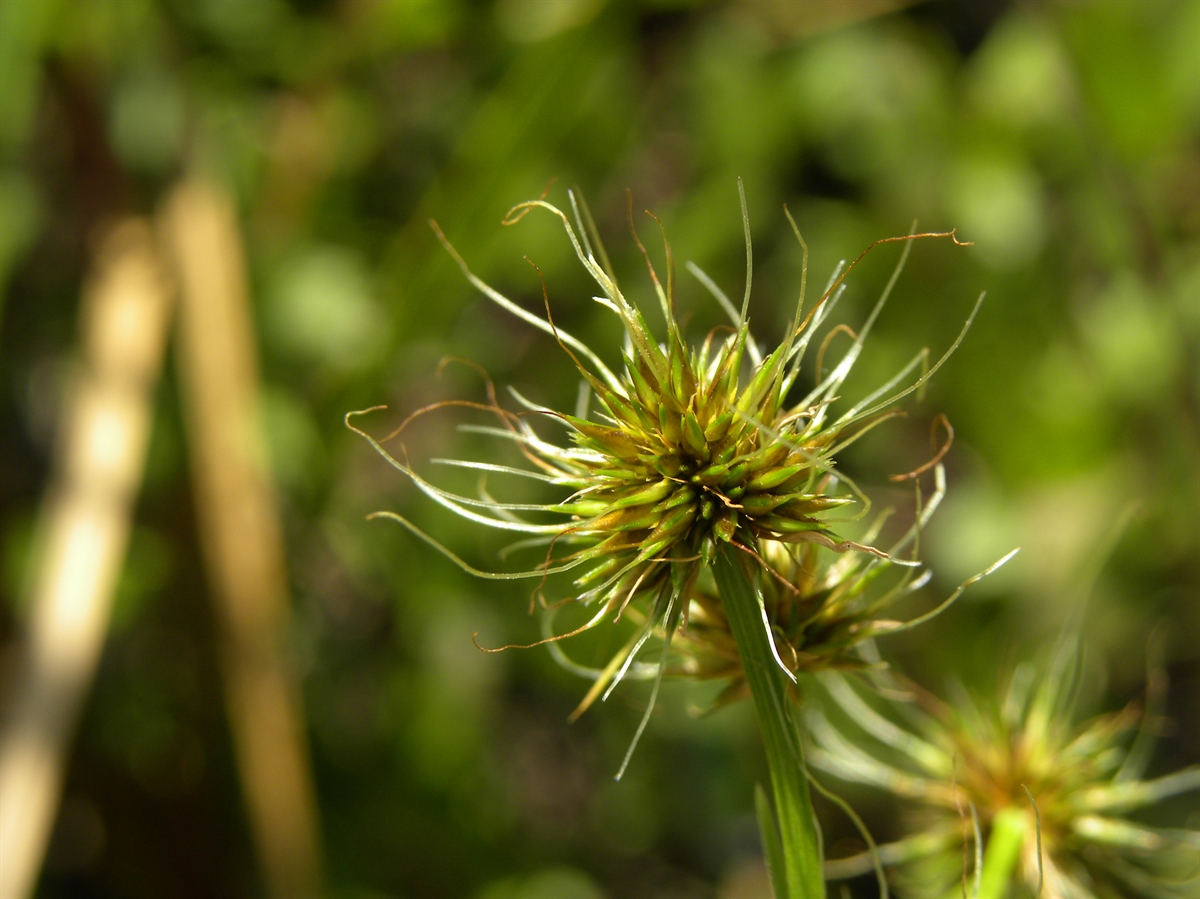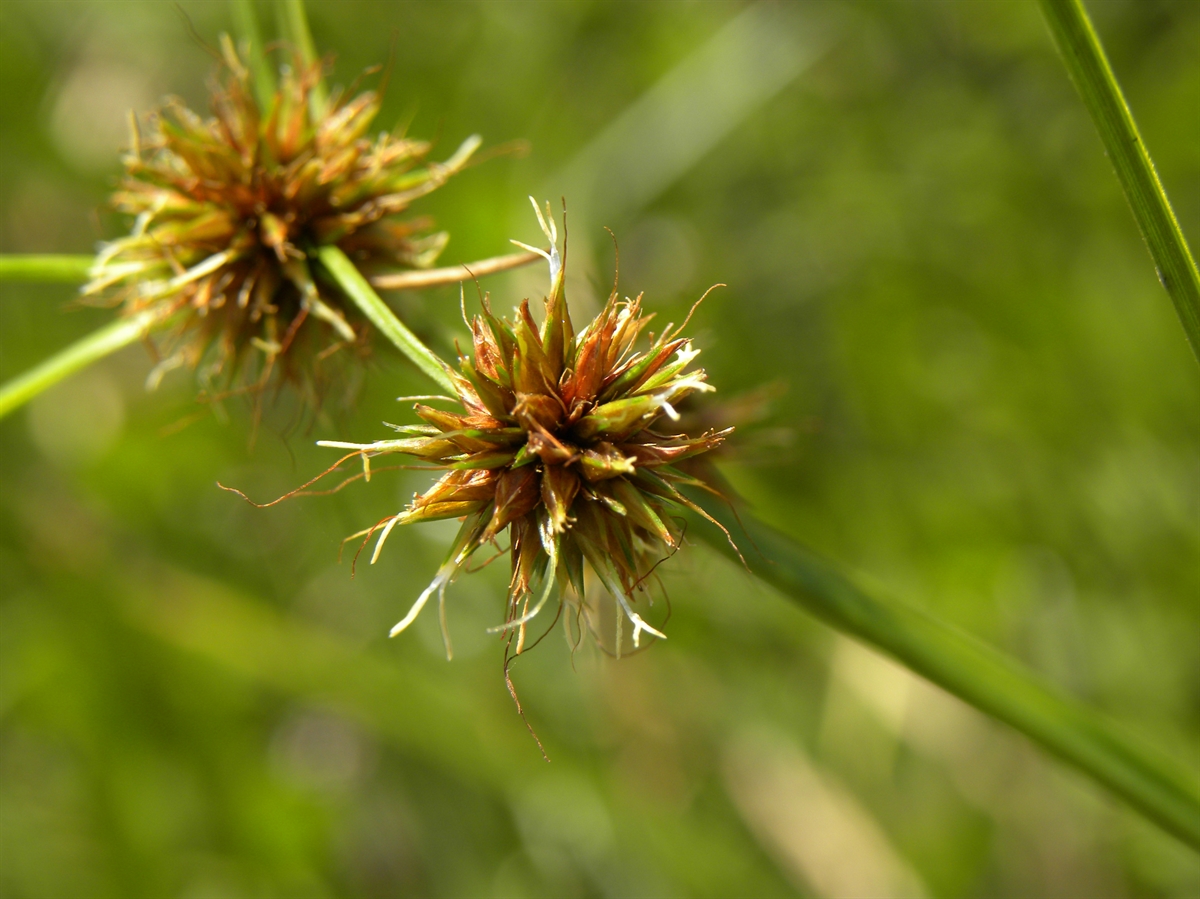Habit: Cyperus croceus grows as a clumping herb to 1 m in height. The leaves are arranged alternately, parallel veined, to 80 cm in length and 5 mm wide with an acuminate leaf apex and entire margin.
The incomplete, perfect flowers are arranged a cluster of globose spikelets with no secondary peduncles. The cluster of globes are at the end of a triangular shaped peduncle and are subtended by leaf like bracts. Each individual flower in the spikelet is subtended by a bract. There is no calyx or corolla. There are 3 stamens. The ovary is superior with a single locule. The fruit is an achene at maturity.
Habitat: Cyperus croceus grows in ephemeral Fresh Water Wetlands and Human Altered environments (yards, old fields).
Distribution: Cyperus croceus occurs throughout the Lucayan Archipelago, Central America and northern South America and the southern United States.
Medicinal/Cultural/Economic usage: Cyperus croceus is not known to be used medicinally in the Lucayan Archipelago.



